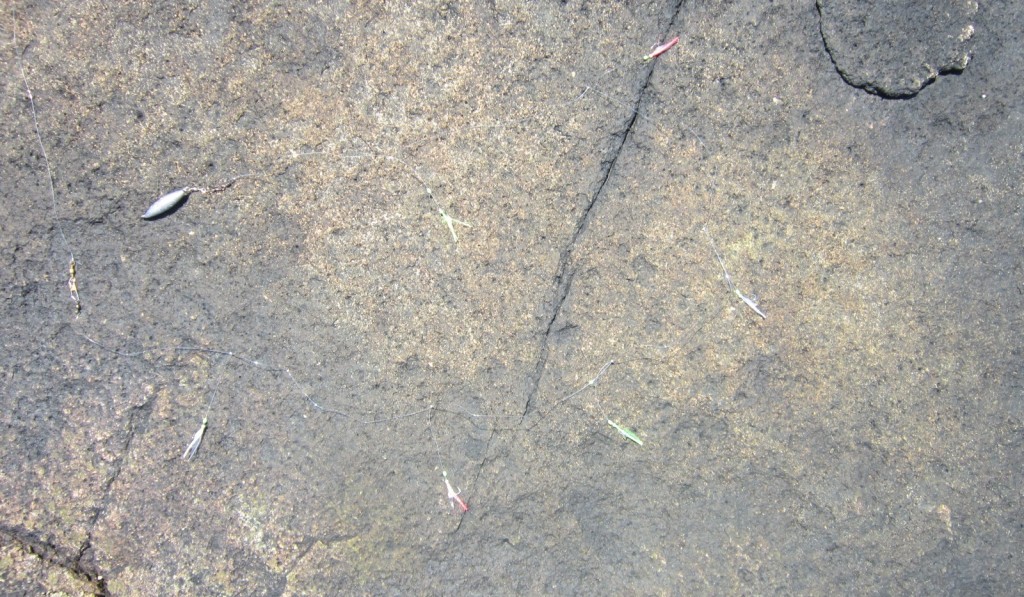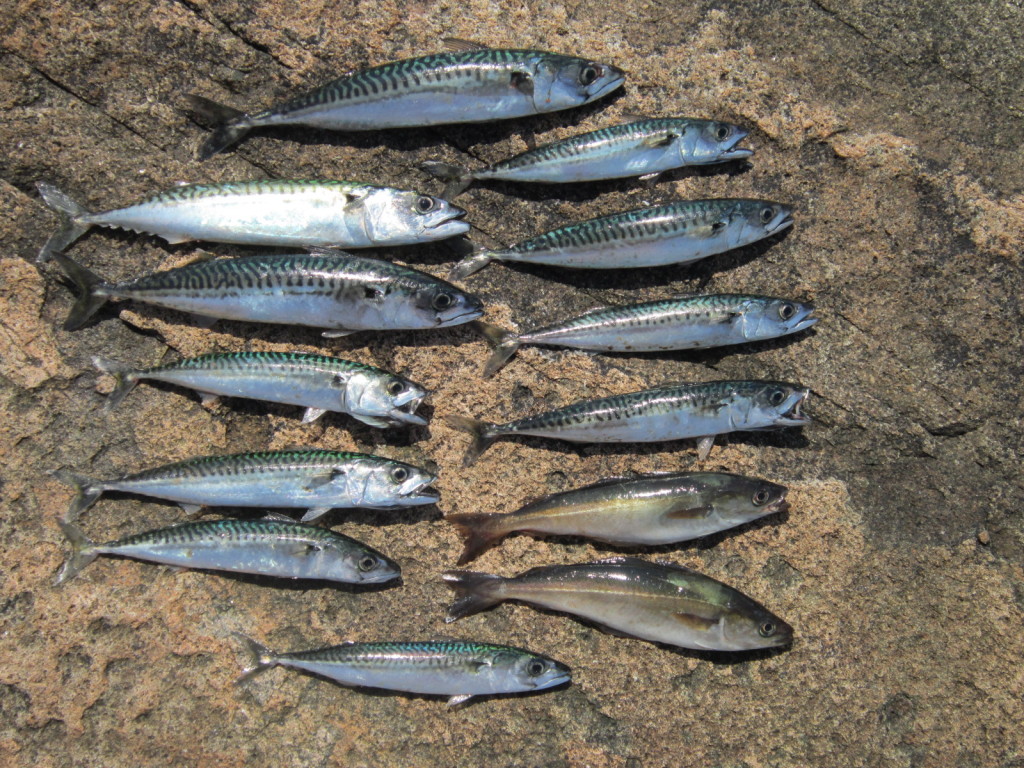My wife and I made another trip down to the Schoodic Peninsula yesterday for the dual purpose of fishing and escaping the heat. We’ve been enduring a rare period of hot, sunny, and humid weather recently and the temperature is usually noticeably cooler on the water.
We initially thought the trip was going to be a bust in as the first two hours of fishing did not yield a single bite. The hour prior to high tide, however, yielded a good deal of action and we landed a total of 11 mackerel and two small pollock. The 4 largest mackerel were in the 12-13-inch range, which is larger than typical.
My wife caught the three largest of the above mackerel simultaneously on a sabiki rig. The combined fight offered by the fish was substantial and she initially thought that she had become snagged on a bed of seaweed.
Mackerel are possibly the ultimate fun fish of the northwestern Atlantic. They can be easily caught from shore on inexpensive gear and a successful outing requires absolutely no skill or finesse on the part of the angler. If mackerel are present and biting, they will indiscriminately attack any bright and shiny object small enough to fit in their mouths. On a good day, these traits can make for hours of non-stop action.
Methods and gear
There are undoubtedly numerous methods for catching mackerel, but I prefer casting from secluded sections of shoreline rather than jigging from piers and floats as such convenient and comfortable structures tend to be a bit crowded.
A medium weight freshwater spinning rod/reel combo loaded with 12 to 14 pound monofilament line is all that is needed for mackerel fishing. A light or ultra light setup will also work in a pinch, but may not have the strength needed to contend with waves, currents, and frequent snags on rocks and seaweed.
For a rig, I prefer a sabiki or similar multi-hook rig attached to a 1 to 2-ounce casting or trolling sinker. The line from the reel attaches to the barrel swivel at the top of the rig and the sinker attaches to the snap swivel at the bottom of the rig. Some anglers employ a mackerel jig in lieu of a plain sinker, but my experience has been that such jigs greatly increase the likelihood of a snag.

Above: A sabiki rig attached to a 2-ounce trolling sinker, ready to catch some fish.
To fish, simply cast and then retrieve the retrieve the rig at a moderate pace. Nothing more complicated is required. If mackerel are around and hungry, they’ll bite.
A note on mackerel as table fare
Mackerel have an unfair reputation as an excessively strong tasting and oily fish. While the meat is darker and stronger than flounder or haddock, it is not nearly as strong as tuna, swordfish, or even salmon.
As with all fish, the key to optimizing flavor is care and preparation. I immediately place any fish I catch into an ice filled cooler. Fish that are left in the summer heat will undoubtedly soften and begin to spoil before the end of the fishing trip. Additionally, I like to clean my catch before leaving the water, making sure to remove the gills, which begin to spoil quickly. Mackerel can be left whole for cooking, but I absolutely hate having fish bones wedge themselves between my teeth, so I put in the extra effort required to produce boneless fillets.
Since mackerel are a naturally flavorful fish, light and simple seasoning is all that is required. Salt, pepper, and garlic or alternatively a light soy sauce or teriyaki-based marinade is a good choice of seasoning. Grilling and broiling are the best cooking methods for mackerel and care should be taken not to overcook and dry out the fillets. The finished product will be good hot or cold when paired with a fresh garden salad. (387)




